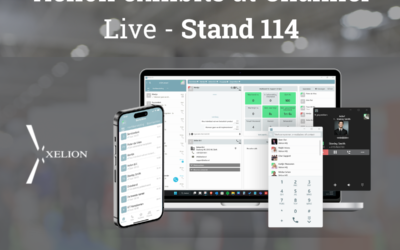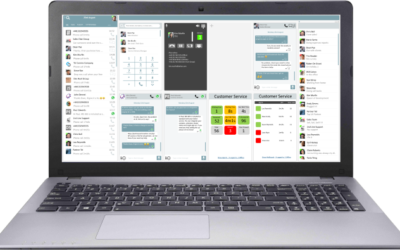Why do you keep entering duplicate customer data over and over again?
Telecommunications have in recent years been accommodated in the ICT department, with the C of Communications representing the link between telecom and IT. Now it is time to take the next step, in which customer contact becomes an integral part of the primary process.

“Head of the Broom Closet”
The time that organisations made the “Head of the Broom Closet” responsible for the telephone exchange is definitely over. Thanks to the emergence of IP telephony, the operation of telecom has increasingly become part of the IT processes. The next step towards Organised Communications (OC) has been taken. An important part of OC is that the link with mobile is properly organised. The telephone exchange from the cloud, Xelion, offers the possibility to handle all fixed calls also with a smartphone thanks to an excellent mobile app. Xelion allows colleagues to easily chat amongst themselves, links with the Outlook calendar are established, and all sorts of management reports (wallboards) can be generated quickly. In short, thanks to these possibilities, not featured in the traditional telephone system, telecommunications have more effectively integrated into overall business operations. What are the ‘next steps’ now?
A link with CRM! : Enter customer data only once
The most obvious integration that an organisation can implement on the way to OC, is the one between telephony and Customer Relationship Management software (CRM). Such a link will allow you to record both outgoing and incoming calls – as well as other forms of communication such as e-mail and chat – in an effective manner. This way, colleagues who communicate with customers are all working from the same database, call history, and knowledge. And that results in a conversation like this: “Well Mrs. Smith, I see that my colleague Adam agreed with you yesterday that we would review the status of your accounts with you today.” If, on top of that, Mrs. Smith is called at the appointed time or has been given a direct contact number, serious improvements have truly been implemented. Xelion has links with all the major CRM packages used in the Netherlands. If a certain coupling (API) does not exist, it will be created at the request of the customer. Thanks to these integrations, customer data will only have to be entered once and can be used by anyone in the organisation by means of shared address books. Now that’s a pleasant way to work!
A link with ERP! : All data quickly at hand
For many companies, customer contact is part of their primary process. Think of municipalities, healthcare, e-tailers, providers, insurers, banks, and so on. For these organisations, each contact with the customer has consequences for other processes in the organisation. Therefore, the integration needs a link to Enterprise Resource Planning (ERP), which goes deeper than a link to CRM alone. A link with ERP allows one to also retrieve financial information and other issues from the customer status quickly and skilfully when necessary. Imagine the following conversation: “Thank you for your call Mr. Johnson, I can see in your customer data that we will be able to upgrade you to premium status, as my colleague Adam discussed with you yesterday. The new invoice is on its way.” Xelion has links to well-known packages such as AFAS, Exact, and Dynamics, with which a number of great successes have already been achieved in the field of Organised Communications in the past few years.
Download this article? The telephone exchange becomes part of business operations.pdf













